Nothing sounds better than a warm bowl of homemade Zenzai (Oshiruko) or sweet red bean soup with toasted mochi rice cakes! I’ll show you 3 ways to make this popular winter dessert in Japan with either homemade or store-bought ingredients.
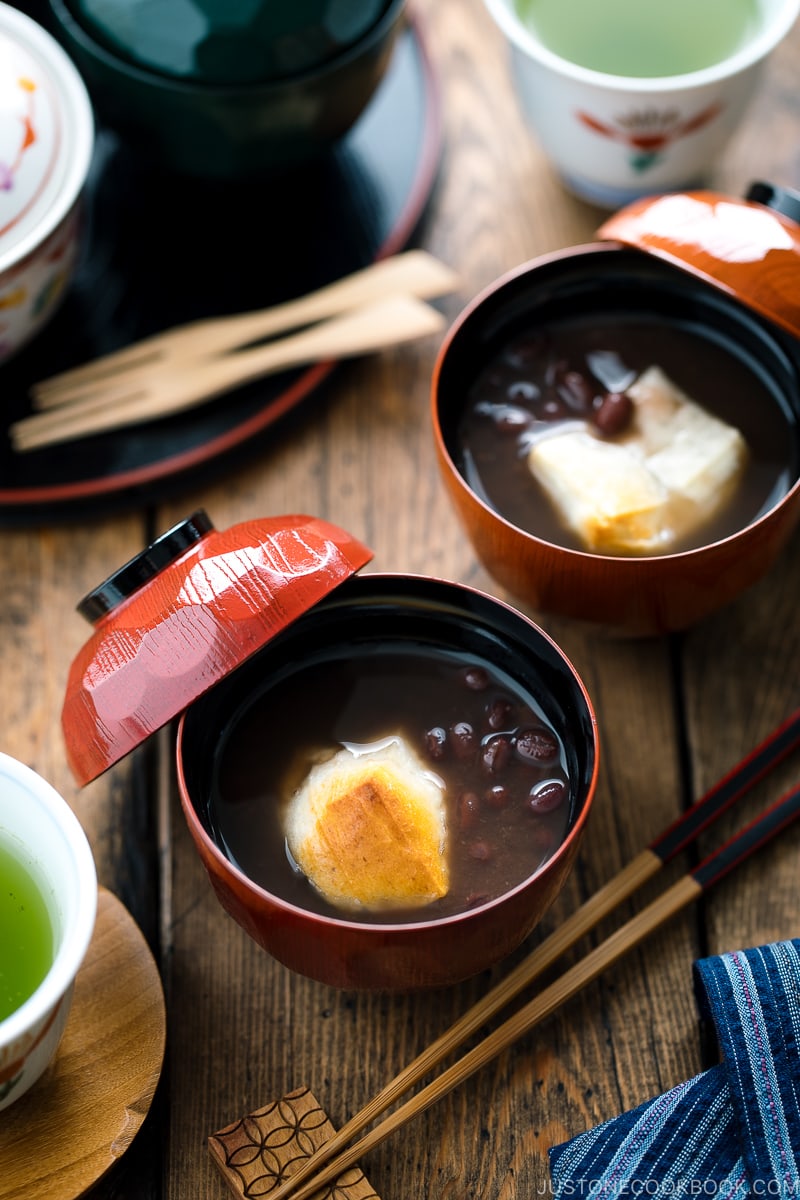
Zenzai (ぜんざい) is a traditional Japanese dessert soup made with azuki beans. This sweet red bean soup is served hot with mochi (rice cake) or shiratama dango (glutinous rice flour dumplings) inside the soup.
Slightly sweet, with a gentle fragrance from the red beans, the dessert soup has the instant magic of warming up one’s soul. The toasty, chewy mochi makes everything even better! It is one of those dishes that brings many cozy memories of my childhood. I couldn’t resist Zenzai whenever it’s offered. Although it’s a wintertime dessert, I crave and enjoy making it all year round (especially in the cooler climate I live in!).
With a pressure cooker or ready-to-use red bean paste, we can make this red bean soup in no time!
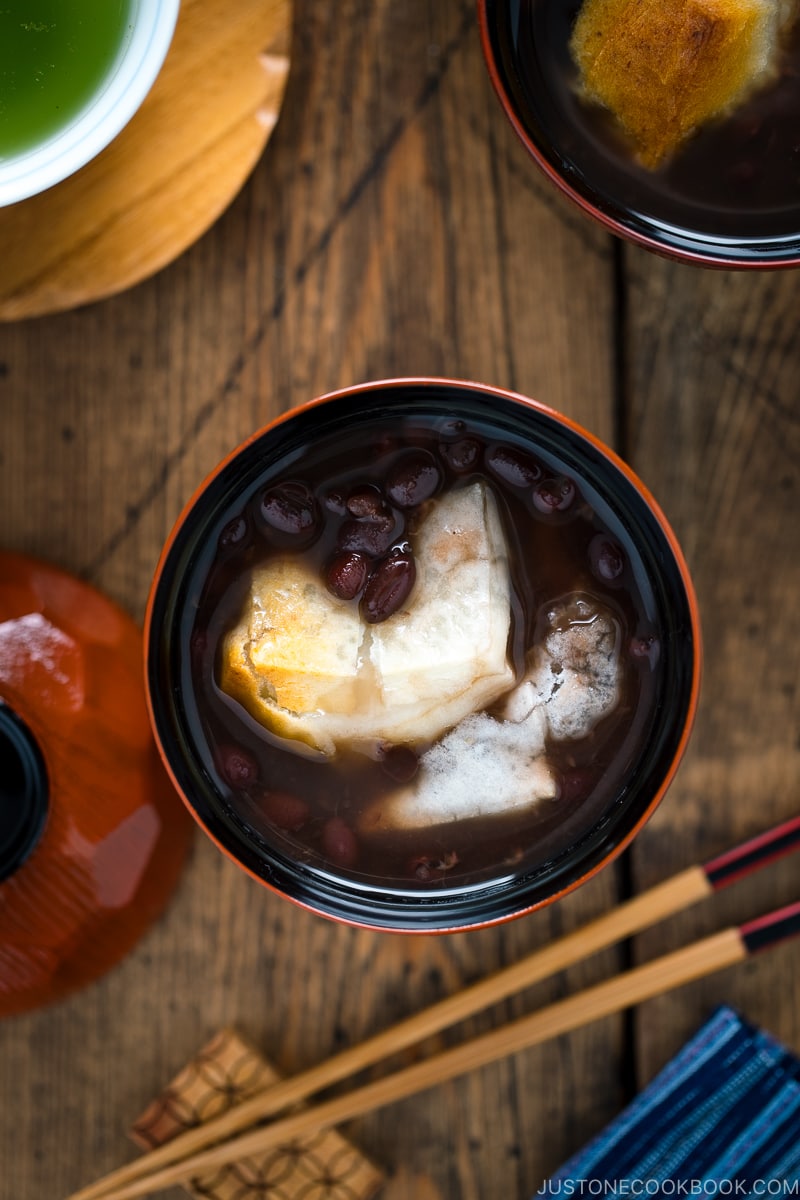
What is Zenzai (Oshiruko)?
Zenzai (ぜんざい, 善哉) is basically a soup made from boiling azuki beans with sugar and salt. You might have heard of a different name for this dessert. Oshiruko(お汁粉) or Shiruko is used in the east of Japan where boiled azuki beans are crushed into a smoother paste and become more watery soup than Zenzai.
Quick Review – Zenzai vs. Oshiruko
East of Japan (East of Nagoya, including Tokyo)
- Chunky red bean soup OR soup-less chunky red bean over mochi is called Zenzai.
- Soupy red bean soup without any beans is called Oshiruko.
West of Japan (West of Nagoya, including Osaka)
- Both chunky and fine red bean soups are called Zenzai.
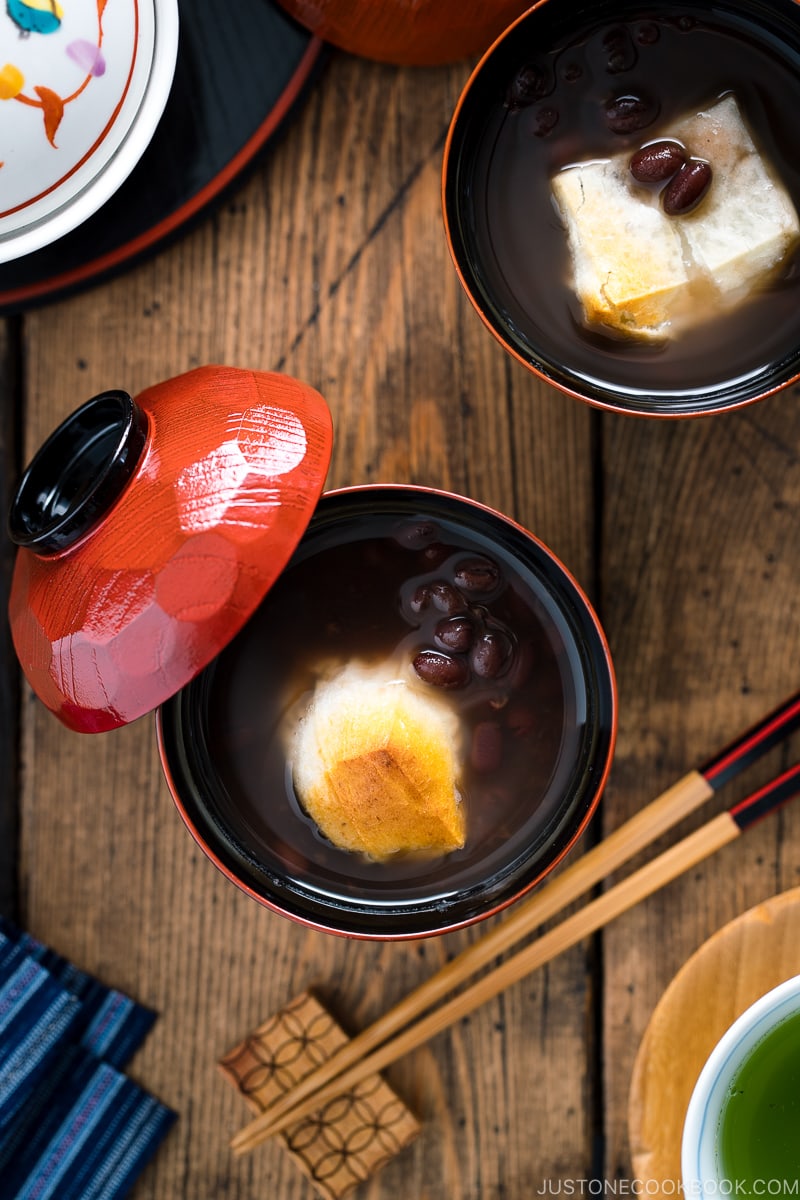
3 Super Easy Ways to Make Zenzai (Oshiruko)
Method 1: Use a Pressure Cooker
If you have a pressure cooker, you can make Zenzai (Oshiruko) much faster. I have an Instant Pot, so here I share how to make the delicious red bean soup using uncooked azuki beans in exactly one hour!
I love my Instant Pots (I have two models this and this) and make this recipe all year round using them. Compared to the stovetop method, pressure cooking really cuts down my time in the kitchen and it’s been a lifesaver! I can do other chores while preparing my favorite, delicious red bean soup!
Method 2: Cook in a Pot over Stovetop
You don’t have a pressure cooker? No worries, I’ll show you how to make it in a traditional method!
Method 3: Use Red Bean Paste
If you want to make Zenzai as quickly as possible, there is even a faster way. Use store-bought red bean paste. You just need to remember they tend to be a bit sweeter than your homemade version, so you might need to adjust the sweetness.
Or if you end up making a big batch of homemade red bean paste (Anko), you can enjoy Zenzai any time! I keep mine frozen all the time and make various Japanese sweets such as Dorayaki, Daifuku, or Dango.
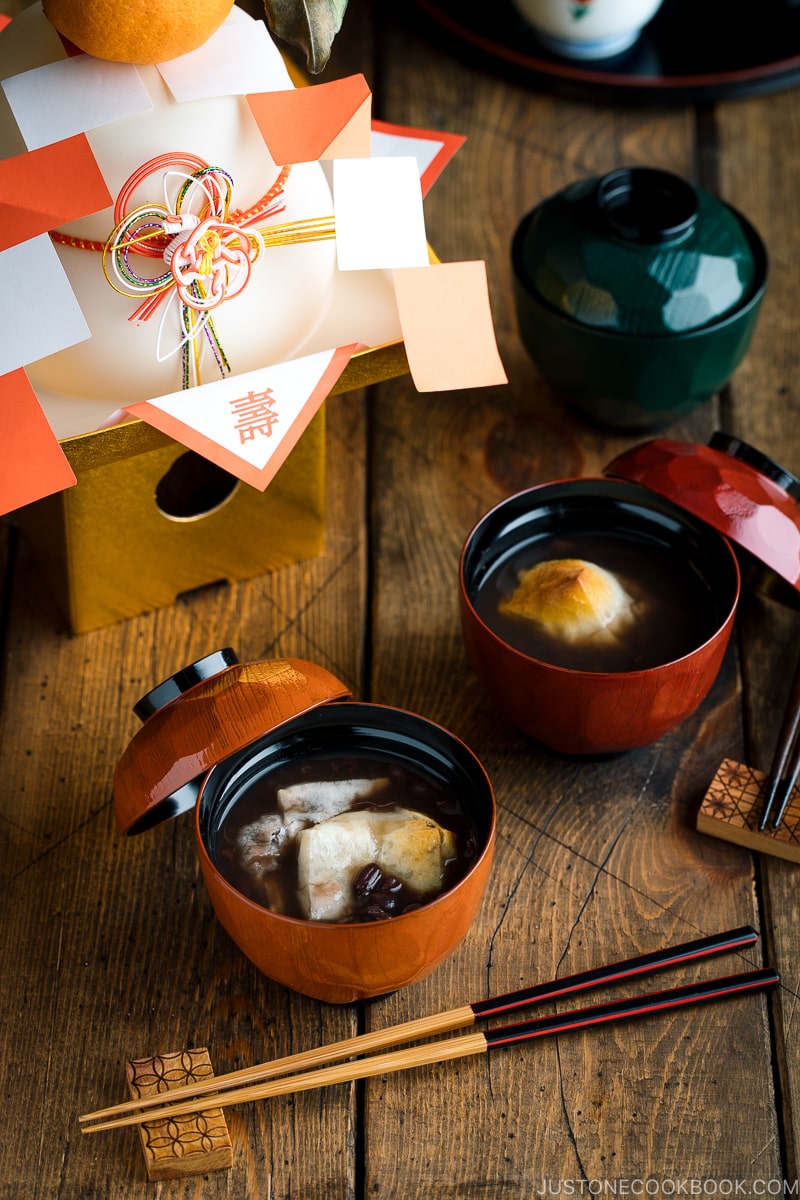
A Great Use of Mochi from Kagami Biraki
Every year January 11th is Kagami Biraki (鏡開き) in Japan. It is a traditional Japanese ceremony to break the ornamental mochi and eat it for good health and fortune for the New Year. You can read more about this cultural ceremony and tradition in my other post.
There is one thing you have to remember for the Kagami Biraki ceremony: never “cut” the mochi when you break it into pieces. The action reminds the Japanese people of Seppuku (切腹), ritual disembowelment during the old times, and they believed it as a sign of bad luck. Therefore, the common way is to break the mochi with a wooden hammer or do it with your hands.
After mochi is broken into pieces, we toast them until nicely brown and put them in Zenzai to enjoy!
Other Delicious Sweets on Just One Cookbook:
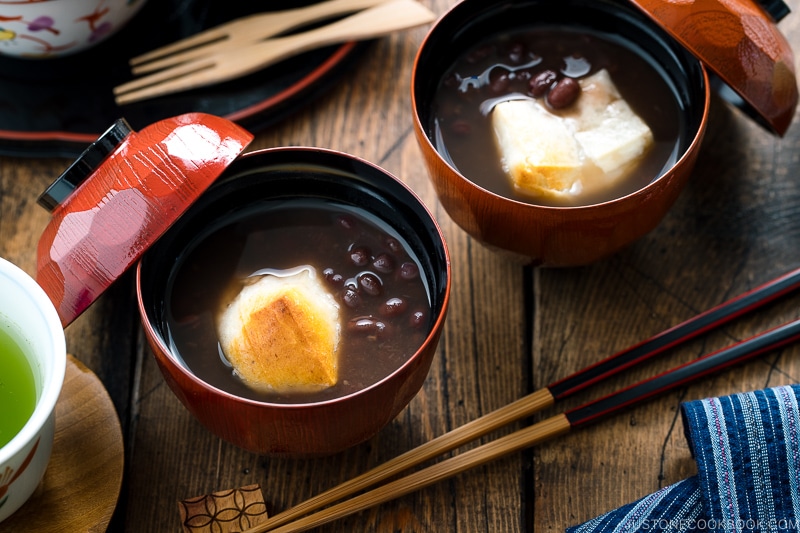
Wish to learn more about Japanese cooking? Sign up for our free newsletter to receive cooking tips & recipe updates! And stay in touch with me on Facebook, Pinterest, YouTube, and Instagram.
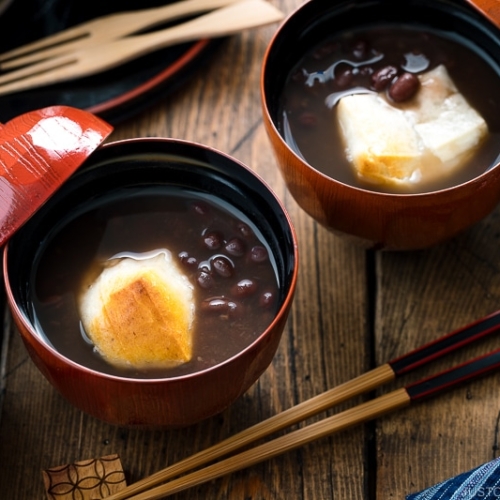
Zenzai (Oshiruko) – Red Bean Soup with Mochi
Ingredients
Using Dried Azuki Beans (4–6 servings)
- 1 cup azuki beans (7 oz; click the Metric button above for weights)
- 4 cups water
- 1 pinch Diamond Crystal kosher salt
- ¾–1 cup sugar
Using Prepared Red Bean Paste (1 serving)
- ½ cup sweet red bean paste (anko) (3.5 oz; use tsubuan for a chunky texture; store bought or homemade using my stovetop or pressure cooker anko recipes)
- ½ cup water (add more, to your preference)
- 1 pinch Diamond Crystal kosher salt (to taste)
To Serve
- 4 pieces Japanese rice cake (mochi) (dried, fresh, or frozen; buy kirimochi or make my Homemade Mochi recipe; you can substitute Shiratama Dango)
Instructions
To Make the Zenzai with Dried Azuki Beans (for 4–6 bowls)
- Gather all the ingredients.

Option 1: Pressure Cooker Method
- Rinse 1 cup azuki beans carefully until the water runs clear. Discard any damaged beans that are floating. Drain the water and transfer the beans to a pressure cooker (I use an Instant Pot).

- Add 4 cups water. Cover and lock the lid. Make sure the steam release handle points at Sealing and not Venting.

- Turn on your pressure cooker. For an Instant Pot, select Manual or Pressure Cooker mode, choose High pressure, and set the cooking time to 15 minutes (or 10 minutes for slightly firmer beans).

- For a stovetop pressure cooker, cook on high heat until it reaches high pressure. Then, reduce the heat to low to maintain the pressure for 15 minutes.
- When it’s done cooking, the Instant Pot will switch automatically to the Keep Warm mode. (For a stovetop pressure cooker, remove the pot from the heat.) Let the pressure release naturally for 30 minutes. Then, turn the steam release handle to Venting to release any remaining pressure. Open the lid.

- Add 1 pinch Diamond Crystal kosher salt (to taste) and ¾–1 cup sugar into the pot.

- Cook on low heat (select the Sauté function on the Instant Pot) for about 5 minutes, stirring occasionally, until the sugar dissolves completely.

- After cooking for 5 minutes, the soup will be a bit darker in color. Keep it warm while you prepare the mochi (see below for instructions).

Option 2: Stovetop Method
- Rinse 1 cup azuki beans carefully until the water is clear. Discard any damaged beans that are floating, then drain the water.

- Put the azuki beans and 4 cups water in a pot.

- Bring the water to a boil over medium-high heat. Once boiling, put an otoshibuta (drop lid) on top of the beans. Turn down the heat to medium low and keep it simmering, without the pot lid, for the next 1–1½ hours. Tip: The otoshibuta will prevent the beans from dancing around too much. You can make your own with aluminum foil.

- Some liquid will evaporate, so add water as needed to keep the beans submerged. After 1 hour, pick up a bean and mash it with your fingers. If it mashes easily, it‘s done. Otherwise, cook for another 15 minutes and check again. Add ¾–1 cup sugar and 1 pinch Diamond Crystal kosher salt (to taste) and cook over low heat, stirring occasionally, until the sugar dissolves completely. Keep it warm while you prepare the mochi (see below for instructions).

To Make the Zenzai with Prepared Red Bean Paste (for 1 bowl)
- To a small saucepan, add ½ cup sweet red bean paste (anko) that‘s either store bought or homemade. I used tsubuan (chunky paste) here, but you can use koshian (fine paste) if you prefer. Add ½ cup water. Bring it to a boil. Add 1 pinch Diamond Crystal kosher salt to taste and mix well. Adjust the consistency by adding water or reducing the soup. Keep warm while you prepare the mochi (see the next step).

To Prepare the Mochi
- To make bite-size pieces of kirimochi, cut 4 pieces Japanese rice cake (mochi) into halves or quarters. Put the pieces on a wire rack set in a baking sheet, then place in a toaster oven or regular oven. You can also toast in a frying pan. If using fresh homemade mochi or shiratama dango, add it to the soup to warm it up. If using frozen mochi, heat it in a pot of boiling water until soft.

- Toast the dried mochi until puffed up and nicely brown, about 10–12 minutes.

To Serve
- Serve the red bean soup in individual bowls and add the toasted, fresh, or boiled mochi. Enjoy!

To Store
- Transfer the soup to an airtight container and store in the refrigerator for up to 4 days and in the freezer for up to a month. Prepare the mochi right before you serve the Zenzai (Oshiruko).
Nutrition
Editor’s Note: This post was originally published on Mar 12, 2012. It’s been updated with new images and additional pressure cooking method in the recipe in January 2020.
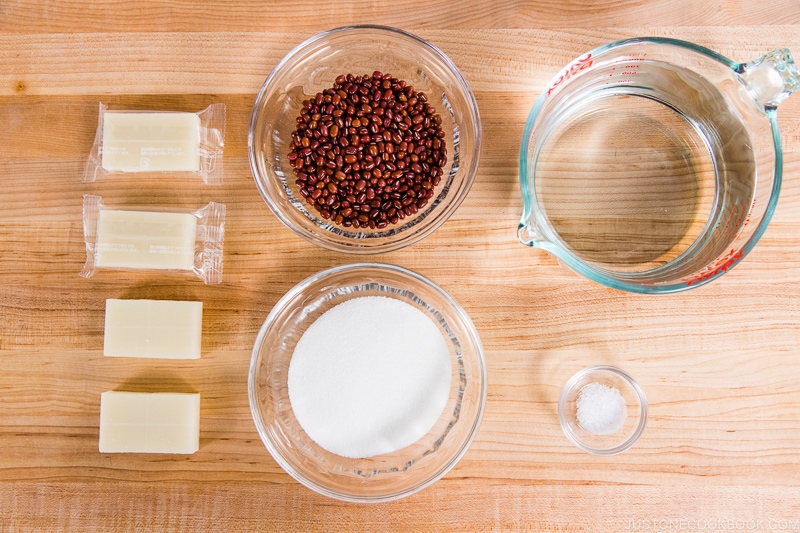
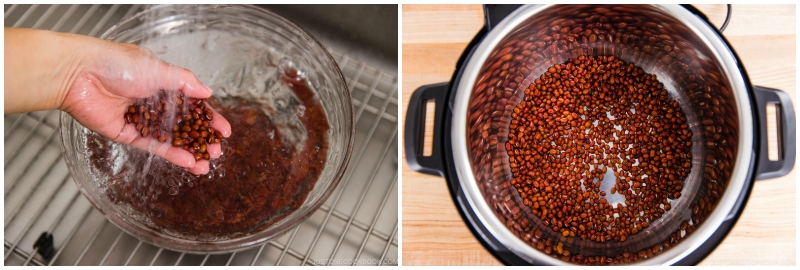
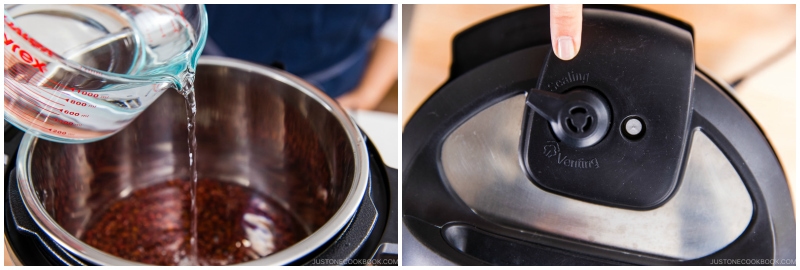
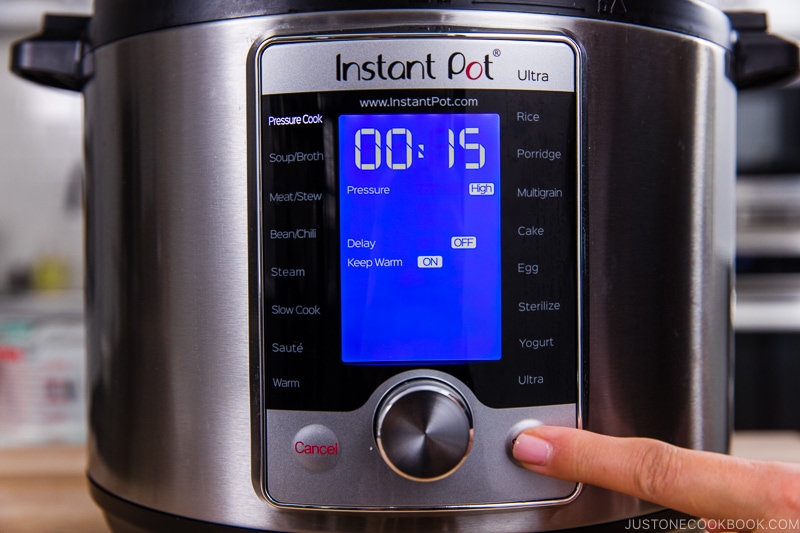
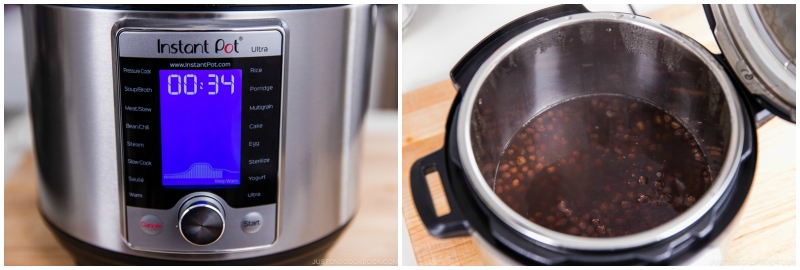
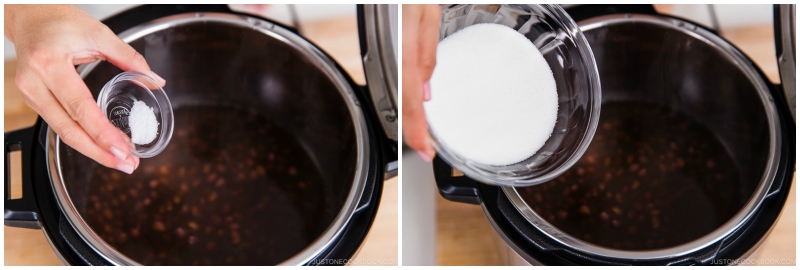
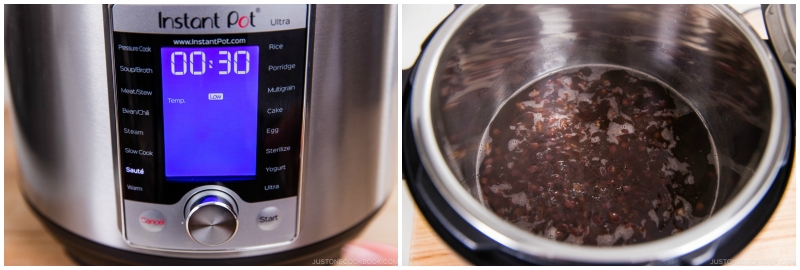
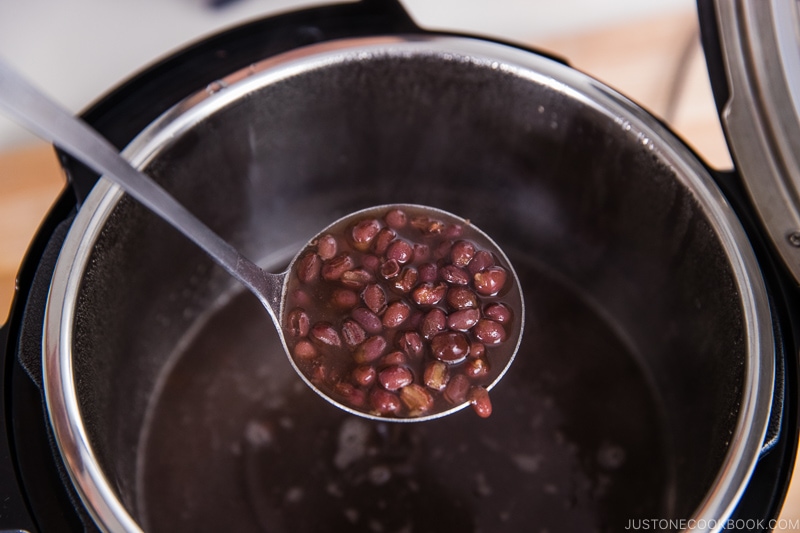
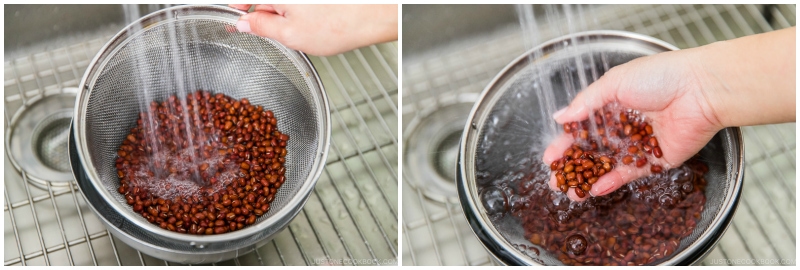
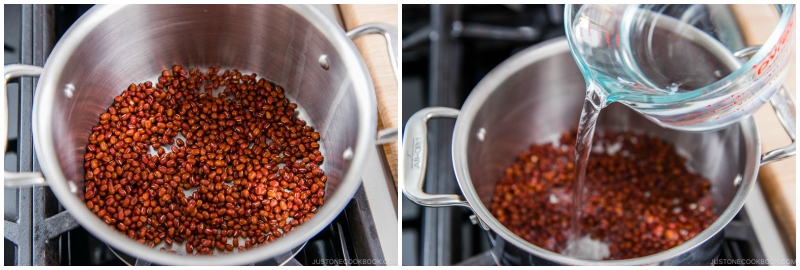
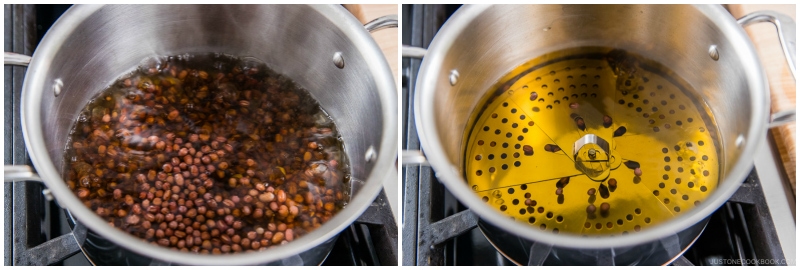
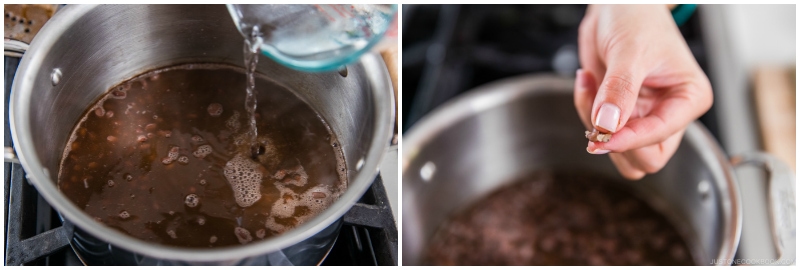
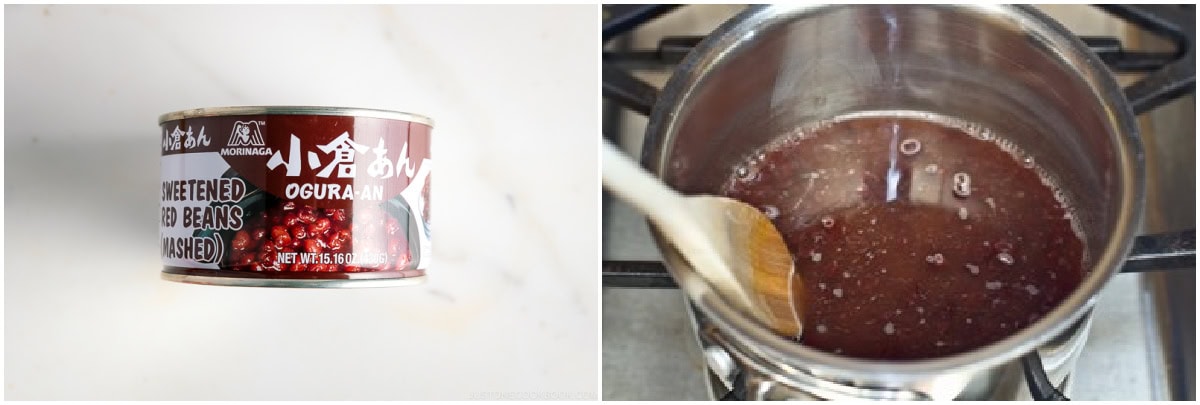
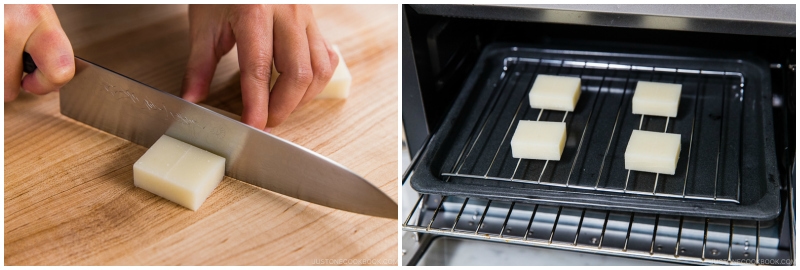
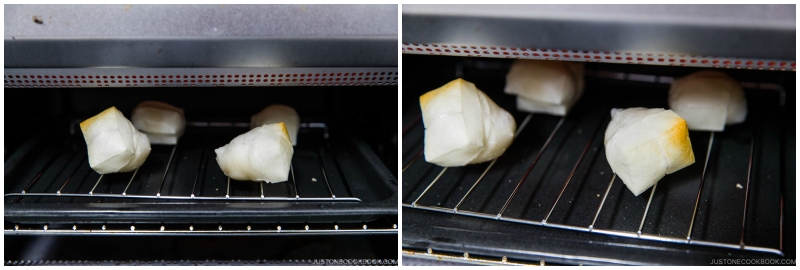
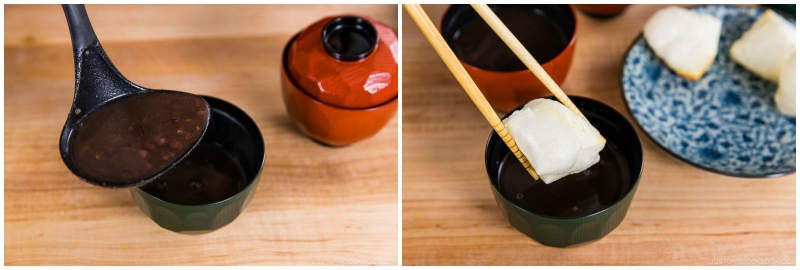










May I ask: Do you soak dryed azuki beans over night before cooking or are they able to be cooked directly?
Hello, Jan. Thank you for trying Nami’s recipe.
This recipe does not require soaking the dried Azuki.
This page provides further information. 😊 We hope this helps!
https://www.justonecookbook.com/how-to-make-anko-red-bean-paste/